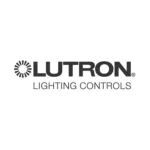Modern fire-rated consumer unit installation in St Austell featuring integrated surge protection device and comprehensive electrical testing to meet 18th Edition wiring regulations standards.

When homeowners in St Austell require consumer unit replacement, the process involves much more than simply swapping old equipment for new. This particular installation demonstrates the comprehensive approach needed to bring an electrical system into full compliance with current safety standards whilst protecting valuable electronics from power surges.
The existing consumer unit required complete replacement due to outdated protection systems that couldn’t meet modern electrical safety requirements. Located eight feet off the ground in the front porch area, the installation presented unique access challenges that required careful planning and appropriate safety measures throughout the work.
St Austell consumer unit replacement projects typically begin with a thorough electrical inspection to assess the condition of existing circuits. An Electrical Installation Condition Report (EICR) forms the foundation of any upgrade work, providing detailed analysis of circuit integrity, insulation resistance, and earth fault loop impedance measurements across all connected circuits.
The replacement involved installing a modern 14-way fire-rated consumer unit equipped with individual RCBOs for each circuit. This configuration provides both overcurrent protection and residual current protection at circuit level, significantly improving safety compared to older systems that relied on shared RCD protection. Each circuit receives independent protection, meaning a fault on one circuit won’t affect the operation of others.
Surge protection device integration represents a crucial advancement in modern electrical installations. The SPD protects connected electronics from voltage fluctuations and power surges originating from the electrical grid. With increasing reliance on sensitive electronic equipment in homes, from smart TVs to computer systems, surge protection has become an essential safety feature rather than an optional extra.
The incoming meter tails required upgrading to 25mm double insulated cabling to handle increased electrical loads safely. Modern homes typically draw significantly more power than properties wired decades ago, making cable upgrades necessary to prevent overheating and maintain safe operation under normal load conditions.
Fire-rated backing boards provide additional protection by containing any electrical faults within the consumer unit area, preventing fire spread to surrounding building materials. This fire containment system meets Building Regulations requirements and provides peace of mind for homeowners concerned about electrical fire risks.
Circuit testing forms an integral part of any St Austell consumer unit replacement project. Each circuit undergoes comprehensive testing including insulation resistance measurements, polarity checks, earth fault loop impedance testing, and RCD operation verification. These tests confirm that all circuits operate safely within design parameters and meet 18th Edition wiring regulation requirements.
The installation process required extending the existing backing board to accommodate the larger consumer unit dimensions. Modern units with individual circuit protection require more space than older fuse boxes, making backing board modifications common during upgrade projects.
RCBO selection depends on circuit requirements and load characteristics. Higher current ratings suit circuits serving electric showers, cookers, and other high-demand appliances, whilst lighting circuits typically require lower ratings. The specific combination of 32A, 20A, and 6A RCBOs provides appropriate protection levels across different circuit types.
Professional electrical testing produces two key certification documents following St Austell consumer unit replacement work. The Electrical Installation Certificate (EIC) covers the new installation work, confirming compliance with current wiring regulations. The EICR provides ongoing condition assessment of existing circuits, identifying any remedial work needed to maintain electrical safety standards.
Building Control notification ensures local authorities receive required documentation about electrical work completion. This notification process protects homeowners by providing official records of compliant electrical installations, which proves valuable during property transactions or insurance claims.
The completed installation provides reliable electrical distribution with modern safety features throughout the property. Individual circuit protection means electrical faults affect only the specific circuit involved, reducing disruption during fault conditions. Surge protection safeguards valuable electronics from grid-related power quality issues that can cause expensive equipment damage.
Access challenges at height required appropriate safety equipment and methodology to complete the installation safely. Working eight feet above ground level demands proper scaffolding or ladder systems with adequate safety margins to protect both electricians and property occupants during the upgrade process.
Modern consumer units offer improved accessibility for future maintenance work compared to older installations. Clear circuit labelling and standardised component layouts make fault finding and routine testing more efficient, reducing service call costs over the system’s operational lifetime.
The project demonstrates how comprehensive electrical upgrades address multiple safety and functionality requirements simultaneously. Rather than piecemeal improvements, complete consumer unit replacement provides a foundation for reliable electrical service whilst meeting all current regulatory standards for new electrical work.









Ready to make a difference? Explore exciting career opportunities with us!